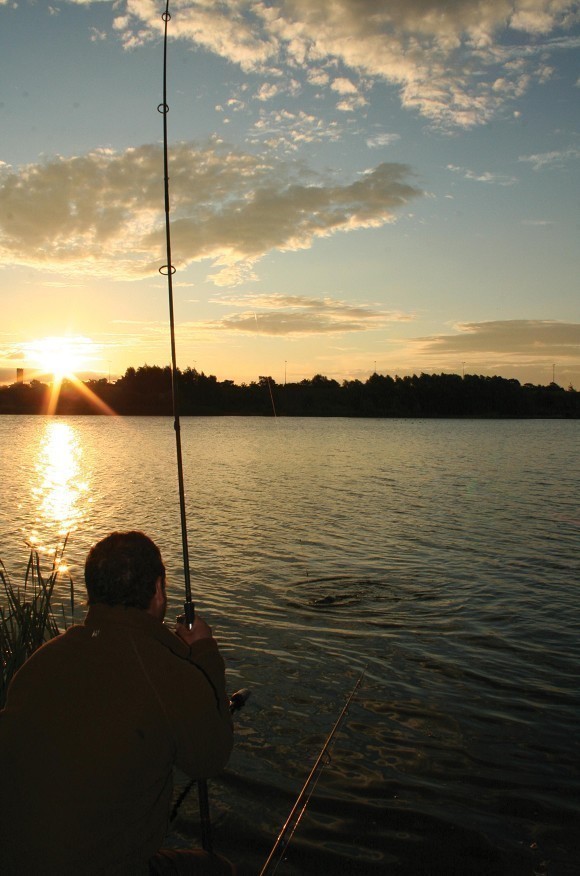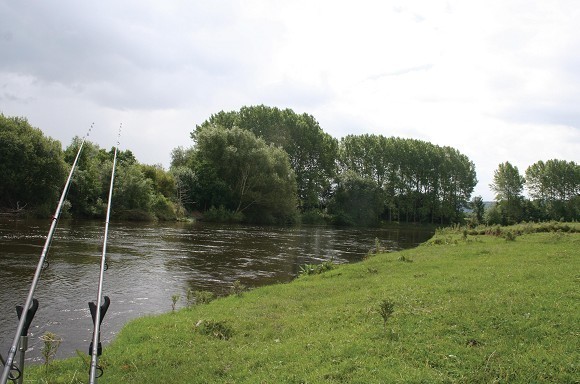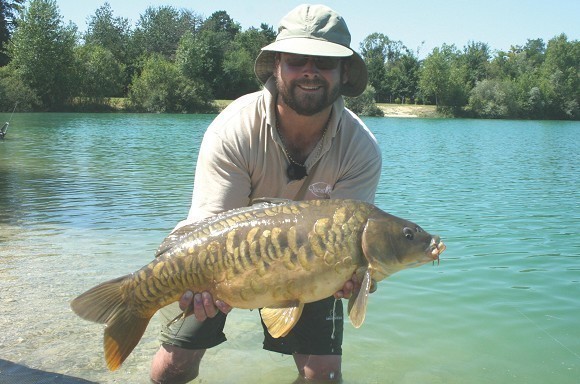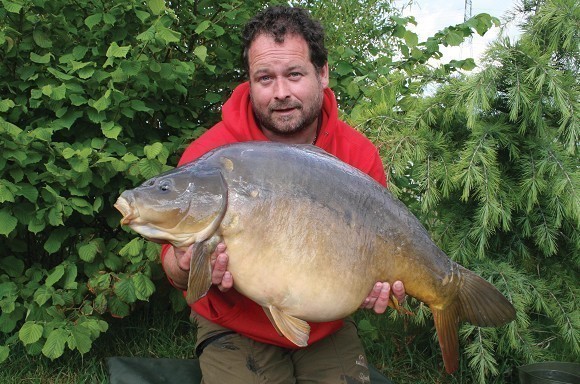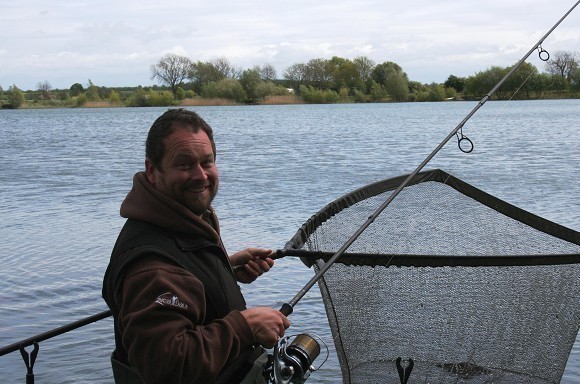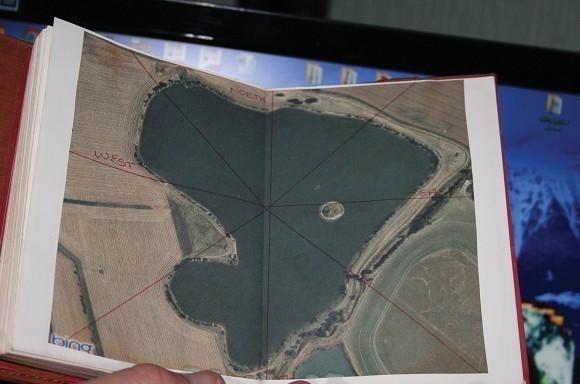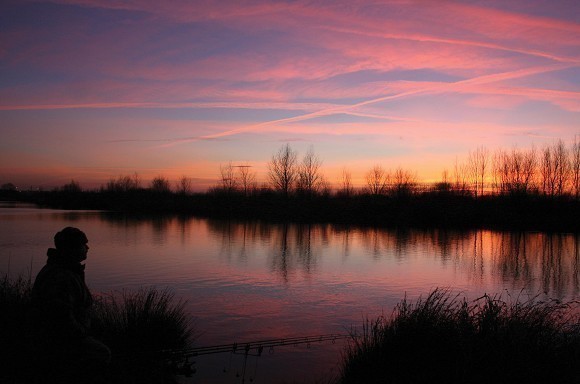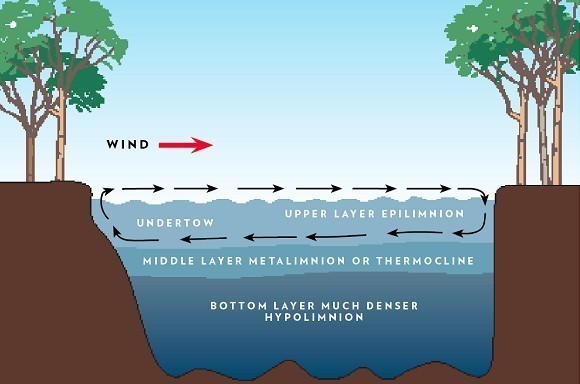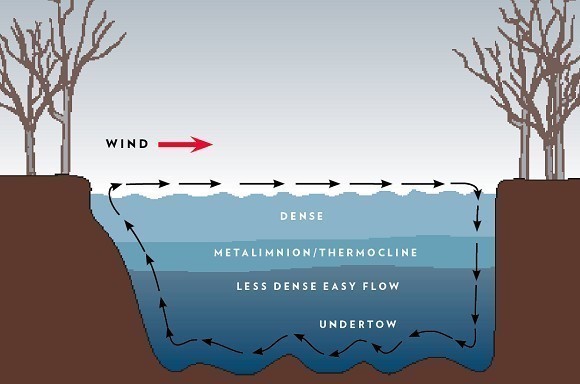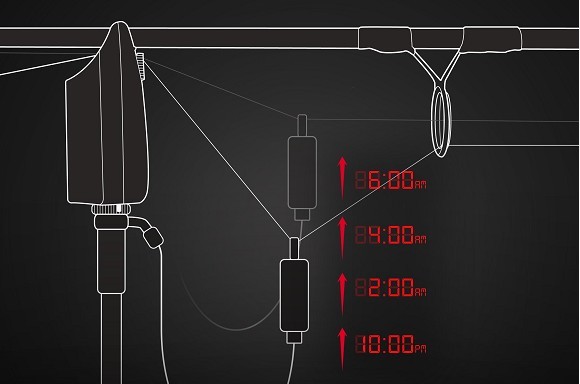
Understanding undertow
One of the most important yet least understood subjects in carp fishing. Seasoned pro Shaun Harrison reveals his findings from 35 years of carp fishing
Now here is a subject we don’t see discussed very much but is one that is vitally important on all waters but particularly the larger waters and is in my mind much more important than the thing that everyone likes to talk about: the wind.
Yes, the wind creates the undertow but the undertow isn’t always as obvious in which way it is moving thus in which way it is affecting the carp. I guess I need to get down to basics a little here, plus I might need these extra words to be able to pad an article out long enough to cover this really confusing and often frustrating subject.
If lakes were constructed like your average swimming pool with flat even sides and a gentle sloping depth then it would be pretty obvious what the undertow was doing. With a big wind pushing the water up one end of the pool it would hit the end then double back on itself creating a current (undertow) which would push back under water in the opposite direction of the wind. Pretty obvious I guess – or is it?
All fish like to swim against a current. They have evolved that way, turn them around to face the other way for long and breathing becomes difficult. Hold a fish the wrong way around in a river current and it will die being unable to breathe. So generally speaking the fish will follow these underwater currents and generally end up on the end of the wind. How long they remain there very much depends upon the strain of carp. This is all very well and good but we don’t have many waters shaped like a swimming pool with nothing protruding from the bottom to alter these currents.
I guess like many others I never really gave underwater currents much thought until I started noticing some rather strange happenings on three different deep water pits I fish and then it suddenly occurred to me what a massive part of the jigsaw I had been ignoring. I always like to fish my indicators at half-mast so they are able to rise as far as they can fall back. I very much fish for ‘clues’ and liners etc. and know from visual observation that fish swimming into a line and a bobbin rising spooks them far less than swimming into a line with no give i.e. bobbins that have been set at the top or have crept up to the top.
On the other side of the coin I still want enough play in the indicator to give me several bleeps on the alarm in the event of a drop back. I guess it must be deemed really trendy to fish with visual indicators with hardly any movement as so many seem to do nowadays. I don’t really get it myself and I know I would be much less aware of fish being in my swim if I were to have to use short cord or chains on my visuals, not to mention hardly any indication on a drop back, plus of course more ‘spooked’ fish leaving the area I’m fishing.
To retain my favoured and untrendy half-mast scenario with my bobbins, I am forever adding or removing weight from them. I want everything balanced but I guess this comes from a lot of years of spreading my wings fishing for lots of different species. Anyway, a little dig about the length of most people’s indicator chains/arms/cords over but it is relevant as the strange happenings I touched upon above were indicator related. It struck me one day that sometimes even in a big wind I could keep my indicators at half-mast without any added weight yet at other times I would run out of weights to add and still the bobbins would creep up. It didn’t seem to make sense to me but one thing that I did learn pretty quickly was that I caught most of my fish when I wasn’t having to keep adding more and more weight to keep the indicators at half-mast. Even in a similar wind direction and similar strength wind there were big differences in how much the water appeared to be moving below the surface and then the absolute obvious hit me. So many things in angling are obvious but it can take years for them to become apparent or for someone to point them out.
In the instance of undertow it has given me far more headaches trying to get my mind around than probably any other subject and even now I am still struggling with it. No issues knowing what it is doing but more of an issue as to how it is affecting the carp. The way I finally started to get my head around what the undertow was doing under the surface was to simply three-quarters drain the lake in my mind’s eye then imagine it to be a moving river flowing from the opposite direction to that in which the wind is blowing. Once I had this picture in my mind I felt as though I was starting to make a little progress in what I was trying to understand.
Once you have a few bars and islands exposed above the surface of the water and natural thick natural weedbed blocks in your mind’s eye or even the odd car or old machinery plant in the drained lake, it soon becomes apparent just how much flow of water is being channelled in some parts of the lake and hardly any in other parts due to hitting obstructions then going for the easy way around just as water would.
Fortunately I have spent a lot of time on rivers fishing for different species including carp and once you start to become more consistent on the rivers you realise that you are simply finding it second nature where the natural build up of food will be and soon find you can ignore a lot of swims as the fish may pass through but they wouldn’t be used to finding much food in them. I much prefer to fish where the fish have found plenty of food for years rather than try and teach them to start visiting new spots because there may or may not be any food there. Forget to keep the bait going in and the fish don’t always bother to keep checking non natural areas.
Just like in the rivers, there will be noticeable currents in places and hardly any current in other places. Obviously the larger and more exposed the lake or pit you are fishing then the more they will be affected by the wind and then of course undertow. Since I have been looking at the waters I fish like that, it has become pretty obvious why some areas produce plenty of fish and some very few at all despite the topography appearing very similar in two different swims. What I have now found myself doing is taking a lot more interest in the topography for a considerable distance either side of my swim for it is from the other swims that the undertow will be forming.
Patrol routes
I am finding this subject a really difficult one to discuss but hopefully you can see now that there are lots of little rivers running through the pits you fish particularly if they have prominent bars, islands or weedbeds. As far as the carp are concerned, they often have several different rivers and indeed tributaries to swim up and down in most decent sized pits and the more you begin to understand these so-called river channels the easier it will become to realise why the fish are caught more frequently in certain areas and indeed why there is often what appears to be a particular red hot spot in a particular hot spot area, a swim within a swim – the often referred to banker spot.
We used to hear ‘patrol routes’ mentioned a lot, particularly by the big fish guys targeting bream on the larger waters and the movement of these fish would remain pretty consistent despite there being no obvious features that they were moving along. I don’t think I would be far wrong in saying these fish would have simply been following the current on these underwater rivers. And like a canal, one day it would flow one way and another day it could be flowing a different way but most of the time the same areas would be the areas with an attractive flow passing through them that the fish follow to the natural larders just out of the flow.
I think this possibly goes some way to explaining why certain areas you see fish regularly but don’t necessarily get a lot of action from as they are comfort travelling routes rather than natural feeding areas. Quite simply by thinking of the waters you fish as rivers and soon you will begin to understand why a lot of natural food will accumulate in certain areas and lesser concentrations in others.
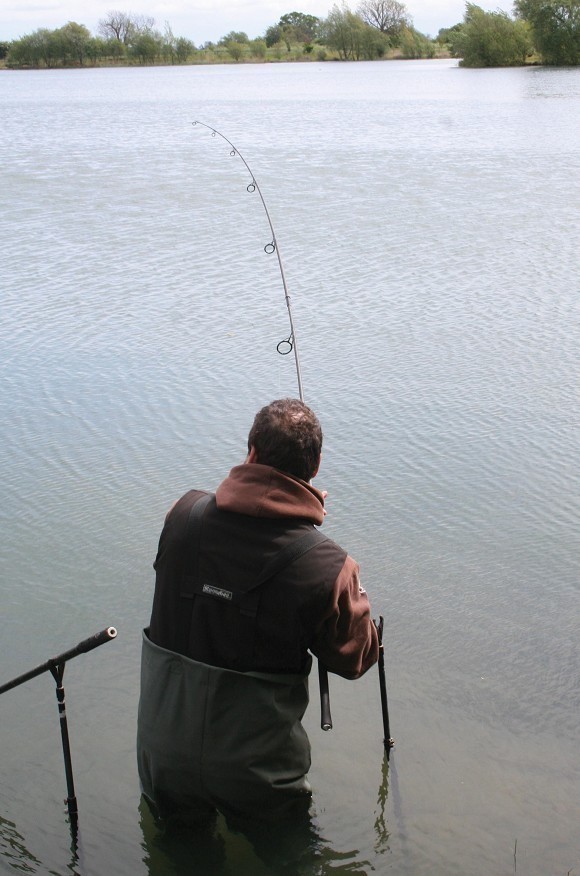 Grenville, where the under-water currents really affect my swim choice these days. Very much behind the wind here but a lot of movement below the surface and a 30 kicking around on the end. Part of a multiple hit.
Grenville, where the under-water currents really affect my swim choice these days. Very much behind the wind here but a lot of movement below the surface and a 30 kicking around on the end. Part of a multiple hit.Natural food larders
Going back to the strange happening I was noticing with the indicators where some days and some swims the bobbins would hang at half-mast all day yet a couple of swims away they would be constantly pulling up tight really emphasises to me the difference in the underwater currents in different parts.
Grenville in Cambridgeshire where I fish a lot so naturally mention it a lot is a prime example of channelled undertow and it doing something completely different to what the casual observer would expect. Now everything is greatly exaggerated at Grenville. It is big, it is open and it is deep but also has a lot of relatively shallow areas too. You can have a 35ft channel running alongside a 16ft plateau. My mate Phil Calloway has dived it and has come up against what are basically walls under the water. Now a flow hitting one of those walls is always going to take the easy way around it and the ends will have a good flow whipping around which can be put to your advantage in regards to spreading the attraction from your bait. That is of course if your bait does actually emit attraction that spreads underwater rather than lifting to the surface as you see with oil which will rise and drift off on the surface rather than drift along in the currents under the surface. With the right sort of additions to your bait you can send a big attraction band under the water covering a decent area for the fish to pick up on once you have a better idea of what the underwater currents are doing.
Remember what I wrote about the effects of turbulent wind on some strains of carp and others behaving in a seemingly opposite way? Always bear this in mind. On the whole, fish enjoy the effect of undertow and will happily laze around with the flow moving over their heads. I presume it makes breathing easier for them for a start. The areas I try and fathom out are the creases, just the same as you would fish on the river where a flow joins with a slack. It is here that you will start to get a larger build up of natural food and they can be excellent areas to present your baits.
It is really noticeable on large waters with islands when a big wind is blowing, the crease on the surface in the lee of the island where the calm water meets the ruffled water is often an excellent place to fish. What is happening on the surface there is often very similar to what is happening below the surface so long as you haven’t large bars of weedbeds running in the opposite direction.
I tried to touch on it when talking about the wind. We often speak of fish holding back off of the wind but those fish can still be enjoying quite a push of water against them when sat in the calm water as we see it. I have fished Grenville when I have been unable to keep the maximum allowed 3oz leads in place due to the strong undertow so don’t underestimate just how much that still water is actually moving in a big wind.
Getting technical
I could have taken a technical route in this article and started to talk about the different temperature bands of the water. The epilimnion (the upper layer), the metalimnion or thermocline as most anglers refer to it as (the middle layer) and the hypolimnion (the bottom layer). But straight away I find myself getting bored writing these words as I am sure you will find them boring to read and suddenly a piece trying to bring more angler awareness of the effects of undertow suddenly becomes a boring page turning piece of scientific work, so I won’t go there but the words are there if you want to do some further research on water temperature bands which is really a follow on advanced section to this type of article.
There used to be plenty written about thermoclines (metalimnion) but these only really affect the deep waters. Most shallow lakes the water temperatures from the surface to the bottom are quite similar and change quickly. The thermocline is more of a deep water thing and a summer and winter phenomenon which disappears in the spring and autumn when the temperatures in the upper layers and bottom layers of a lake become much closer to each other.
Now this will affect how the undertow is affecting the water as in the warm summer months the undertow will mostly be in the upper layers of the water as the thermocline (metalimnion) will stop much of the flow passing through it due to the different density of different water temperatures. Warm water is less dense than cold water which keeps the most movement (undertow) in the upper layers. Does this ring any bells with you as to why the carp are often in the upper layers and why Zigs are often the only way to catch them? Yes, the carp are benefitting from those underwater currents a lot of the time and they aren’t finding them in the deep water until the winter.
So to wrap this up whilst I may still have one or two reading this after starting to get a little more technical than how I started the piece, here are a few very important considerations if you fish deep waters. If you don’t skip the next bit or take it on board for if you ever do find yourself on a deep lake.
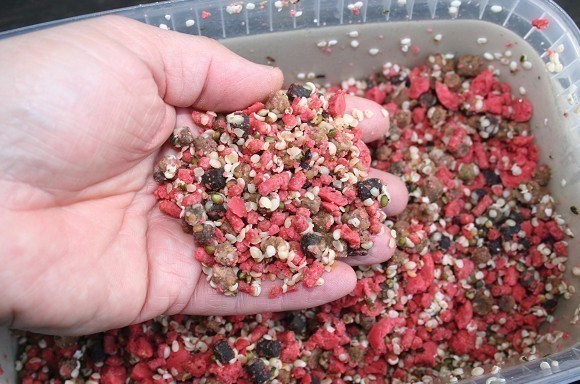 Think where the bait is being placed for maximum spread of attraction aided by the under-water currents
Think where the bait is being placed for maximum spread of attraction aided by the under-water currentsSummarising
I hope this article hasn’t been too heavy to read. It is not my usual type of thing to write and I have tried to keep things in layman terms as much as possible. I hope I have triggered you into thinking a little more about what is actually happening with the water we are casting into. It is changing all of the time and far from being a constant still water.
From keeping fish since I was a nipper the thing I often repeat to people is that you are looking after the water, you simply need to learn how to keep water. Do that and the fish look after themselves.
I guess similar could be said here, understand the water in different times of the year and the rest will become a little more obvious as more parts of this fascinating jigsaw slip into place.





